#they were all built in the late 1800s!
Text
omg lmao there’s a tiktok about the creepy methodist campground where i live and like it’s full of misinformation sigh
#WHILE it is very creepy and the vibes are off it’s not part of a cult#although a cult like lived there for like a few months lmao#like all the houses - cabins were built in the late 1870s-1930s since the campground has been around since the late 1800s#and it’s literally next to the river which floods all the time lmao#i hate driving past it tho it is genuinely creepy and like one time our bus got lost and had to turn around in three#and like everything’s run down and abandoned and crosses everywhere bad vibes
1 note
·
View note
Text
HI. IT'S ME AGAIN. YA BITCH. AND YOU KNOW WHAT THAT MEANS. OH YEAH WE'RE TALKING ABOUT GHOST COSTUMES.
Well... One Ghost costume in particular. Because I've talked at great lengths about how the costumes are made and what they're made out of but I haven't talked much, if at all, about the inspiration behind them. So today we're gonna take a look at Papa's Kaiserion costume.
Impera, Ghost's fifth studio album, builds itself on the themes of the rise and fall of empires. Kaiserion, the first song of the album with lyrics, leans heavily and explicitly on those themes. It makes sense, as being also the first song played live during this era, that Papa's outfit would reflect that empirical meaning.

Copia has always been so interesting to me in terms of stage costumes as he never really tried to fit into the role carved by his predecessors. The band's image, before Terzo was relieved of his Papal duties (and his head), relied on Satanism and depicting themselves as an opposite for Christianity. Taking inspiration into religious costumes and giving them a stylish twist à la Satan. Terzo started this trend of diverging from this image but he only had one stage outfit that wasn't his robes. Copia has had several from the very start.
This one costume is no exception. You will find Satanic and occultist symbols in the embroidery on his vest but it's not trying to be a religious garment in any way, shape or form. It rather reminds me of French military uniforms from the late 1700s to the late 1800s.

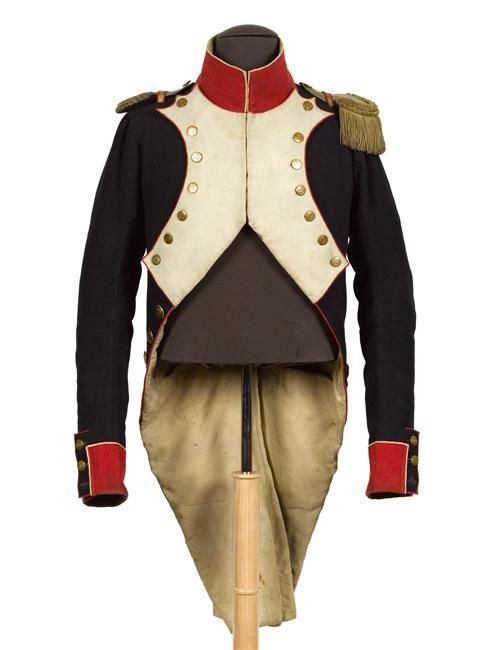
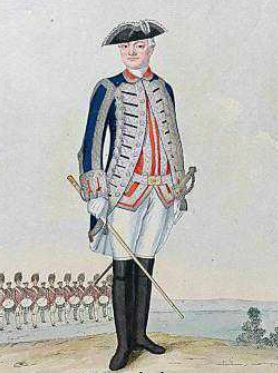
Obviously it's not a perfect replica of any historical uniform but I still find the comparison fascinating and I have a deep appreciation for the imagery it creates. It leads us straight into the atmosphere created by the song and it infers on Copia a sense of authority fitted for the meaning of the album. For the span of those 5 minutes of the concert, he's not just a spiritual leader, he's a ruler commanding an army.
That sentiment is aided by one of my favourite details. Epaulettes were often used to mark stature on uniforms. Not only if you had them but what they looked like. You didn't think I was gonna make a whole post about Papa and not mention the ghouls once, were you?

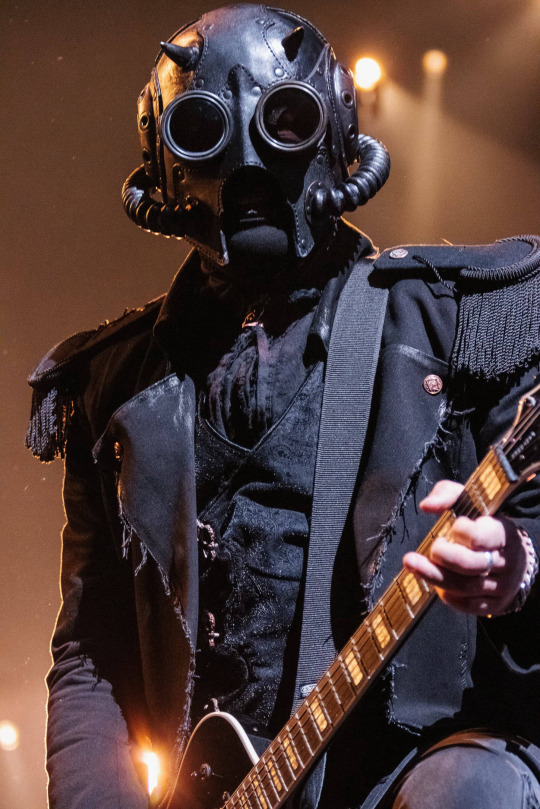
Not only is the overall construction of Papa's jacket made to be more imposing than the ghouls, his golden epaulettes imply a greater status, a higher rank.
I would also like to point out the state of the jacket. Which of course, matches the decrepitude of the pants he wears for the entire concert. To me, it implies a meaning hidden in the concept of the album itself. The military inspired jacket paints him as a commander ready for conquest, ready to go to war for him Empire. To me, all that intentional distressing says "this is what it'll look like once we fall, this is what it'll look like when the Empire fails."
All of this really makes me question the fate awaiting Copia now that this era is over. "The empire has been built." it feels like half of the prophecy fulfilled. We're yet to see it fall, but the fall was promised.
Aight didn't mean to get all ominous on ya at the end but oh well 😅😅😅 that's all for me today! Thank you and good night!
#the band ghost#ghost bc#papa emeritus the fourth#papa emeritus iv#papa copia#copia#impera#impera era#meerkat talks about ghost costumes#nameless ghoul#nameless ghouls
138 notes
·
View notes
Text
Uncovering the unreleased Far Cry 5 in-game Encyclopedia
The almost complete but unused in-game encyclopedia, reconstructed thanks to the oasisstrings file.
Please note that it’s still cut content, so some information might not be relevant anymore.
You can read the oasisstrings file here. Pictures from this encyclopedia were also extracted and posted by @xbaebsae here.
Part 2: Locations - Holland Valley
Gardenview Packing Facility
The last facility added to the Hadlers' apple empire. They shipped their apples throughout Hope County and beyond. When the cult went red state, the Hadlers stopped their legal threats and resorted to violence.
Silver Lake Trailer Park
A community of people just trying to do their best.
Gardenview Orchards
A part of Doug and Debbie Hadler’s apple empire. After their ciderworks facility, they expanded to a second, larger orchard: Gardenview Orchards. Then they opened the Gardenview Packing Facility.
Rae-Rae's Pumpkin Farm
Fiery matriarch Rae-Rae Bouthillier cares about two things: Prize-winning pumpkins and her dog Boomer.
Gardenview Ciderworks
The first major facility owned by Doug and Debbie Hadler. Ten years ago, they had a dream: an empire made of apples. They nearly achieved it too, until the cult forcibly took over everything they had worked for.
Bridge of Tears
It was called the Mišihrew Bridge when the railroad was still active. It’s now a rickety old train bridge and John Seed's ideal location to send a warning message to all sinners.
Frobisher's Cave
In 1970, a cougar, named "Frobisher" by the locals, killed the star pitcher of a rival baseball team. The Hope County Silver Foxes won that year and changed their name to the Cougars in Frobisher's honor.
Howard Cabin
Home of Niesha Howard, an extreme rock climber from Canada who moved to Montana to be a prepper.
Copperhead Rail Yard
Copperhead Rail was created in the late 1800s by Emmet Reaves. It was shut down in the early 70s and a lot got left behind. It became a place for kids to get drunk or bums to find shelter, then the cult bought it.
Lincoln Lookout Tower
It’s the last working fire tower in the county. A man who worked here promised to help the Strickland family fight off the cult if ever their farm was under attack.
Sergey’s Place
A hobo historian calls this place home. Nobody's seen him in a while though.
Boyd Residence
Will Boyd lives here, or at least he did. No one in the valley talks about him. And for good reason.
Strickland Farm
Property owned by the Strickland family of farmers. No friends to Eden’s Gate.
U.S. Auto
A scrap yard containing trashed cars, broken farm equipment, and even a few busted planes. Eden's Gate uses the garage to build and maintain their convoys.
Doverspike Compound
Les Doverspike was a militia nut and he built himself a bunker. Nobody in the prepper community liked him. Despite that, he was anti-cult and pro-Resistance.
Harris Residence
Mike and Deb Harris were preppers with a cunning plan to keep themselves fed after the end of the world.
Reservoir Construction Yard
Deep North Water wanted to build a new reservoir for the Holland Valley. The company ran out of funding and was chased away by Eden’s Gate.
Dodd’s Dumps
Colin Dodd used to run garbage disposal for the whole Holland Valley, and his business lot shows it. The cult intimidated him into leaving but has yet to sort through all he left behind.
Davenport Farm
The remains of a run-down farm. Local farmers let their cows graze here. Can't let good land go to waste.
Hilgard Electric Power Station
The Holland Valley's power supply is reliant on this transformer station which is controlled by Eden's Gate.
Golden Valley Gas
Once the kind of gas station that gave out free bubble gum to kids, Golden Valley is now a strategic point of gasoline and auto maintenance for the Project at Eden's Gate.
Green-Busch Fertilizer Co.
Facing a decline in business, the Green-Busch family said “yes” and sold the place to John Seed on the condition that locals could keep their jobs and work alongside Eden's Gate.
St. Isidore School
Once a religious boarding school, it was forced to close its doors by Eden's Gate.
Dodd Residence
Home of Colin Dodd, hoarder and DIY enthusiast. He never throws anything out. His granddaughter Nadine's been known to lurk here.
Roberts Cabin
Home of Joe Roberts, a hunter. He's gone missing. He loved hunting deer above all else.
Hope County Clinic
Dr. Kim Patterson provides medical services to Hope County's farmers and low-income residents, many of whom would never receive care in such a remote area.
Holland Valley Station
In the days that it was up and running, Copperhead Rail used to stop here. Eden’s Gate uses this station to catch people who try to escape the region.
Grain Elevator
As the farmlands started to collapse, the grain elevator was the first casualty. Too expensive to maintain.
Henbane River Rail Bridge
Copperhead Rail was created in the 1880s during a mining boom, and shut down in the early 70s after the industry collapsed.
Flatiron Stockyards
Bobby Budell established the stock yards in 1946, and has proudly provided farm and ranch auction services since. The economic and community base employed over 25 people at its height.
Fillmore Residence
Home of Doug Fillmore. Not much is known about him.
Dupree Residence
Home of Tommy Dupree, an idiot who used to work at Green-Busch Fertilizer Co. He got fired by Eden's Gate because he was as dumb as the crap he bagged.
Catamount Mines
Fall’s End owes its existence to the gold Orville Fall discovered here in 1865. The mine brought a generation of prosperity to the region until a suspicious accident entombed 100 men within it, forcing its closure in 1912.
Sunrise Farm
Sunrise Farm was going under, so owners Mike and Chandra Dunagan reluctantly sold it to Eden's Gate. Big mistake.
Deep North Irrigation Reservoir
Originally designed to irrigate farms, the reservoir became a liability when the cult began putting Bliss in the water supply. The Resistance sealed it up to buy themselves time.
Red’s Farm Supply
The Redler family has run this place for 4 generations, and earned a reputation for honest business. Wendell did his best to keep it out of cult hands.
Purpletop Telecom Tower
In the 1950s, Purpletop Telecom built this tower, blessing people with the wonders of AM radio. As time and technology marched forward, they were also given the American splendor of a local TV station.
Woodson Pig Farm
This place has been in the Woodson family since 1943. Current owners Andrew and Frances Woodson used their wealth to try to stand up to John Seed and fight him in court. They lost, and joined the Resistance.
Sawyer Residence
Don Sawyer came from out of town to join the Project at Eden's Gate. He restores canoes, but isn't very good at it. Visitors have sworn they've heard him swearing in Russian over those boats.
Hyde Barn
Kenny Hyde's a poor man in Holland Valley, but that doesn't stop him from loving deep fried balls. He's the proud keeper of Fall’s End Testy Festy decorations, stashing them at his barn until they're needed.
Kupka Ranch
Zip Kupka's the only one who really knows what's going on in the Holland Valley.
John’s Gate
A missile silo long decommissioned and abandoned. The locals used to call it "Area 68." Eden's Gate bought it in secret and turned it into a bunker that is in John Seed's safekeeping until the Collapse.
Security Gate
Formerly the entrance to the missile silo, it's now the gateway to John Seed's bunker. Everything taken in the Reaping passes through this checkpoint.
Steele Farm
The Steele family managed to get their kids out of Hope County, but stayed behind to try and defend their home from Eden's Gate.
Lamb of God Church
A Lutheran church. Its elderly priest was overshadowed by Pastor Jerome’s charismatic sermons. John once asked the priest to say “yes.” Not a chance. Then, the priest was gone. He had taken a “long vacation.”
Lamb of God Sacristy
The Project at Eden's Gate has turned the Lamb of God Church's sacristy into a holding place for everything they need to baptize people at the water's edge.
Armstrong Residence
The Project at Eden's Gate targeted the Armstrong family early, burning their home to the ground when Grace Armstrong refused to devote her sharpshooting skills to the Father's cause.
Bradbury Tractor Shed
A shed for tractors.
Hope County Jail Bus
Prisoners hijacked this bus but were run off the road. The wreck was left to rot in the woods. When Eden's Gate brought prohibition to Hope County, some enterprising moonshiners set up shop behind the cult’s back.
Parker Laboratories
Home and workshop of Dr. Laurence Parker, and the origin of many mysterious noise complaints.
Seed Ranch
The power of yes gave John Seed this dream ranch overlooking the Holland Valley. it has commanding views, a private air strip, and secluded soundproofed rooms for his most invigorating religious pursuits.
Bradbury Farm
The home of the Bradbury family, hay farmers for generations. The strange pattern of dead hay in the field does not impact the quality of the final product. That's the Bradbury guarantee.
Bradbury Hay Field
Bradbury Farm's hay is baled and stored here before being sold to clients looking to feed their livestock with quality hay.
Laurel Residence
Laurel family honey was a local market favorite until their bee colony collapsed and jeopardized the business. It also spooked the Laurels who sunk money into a bunker and became preppers overnight.
Eden’s Gate Greenhouse
Bliss plants are found throughout the Henbane River, but they're also found here. John Seed takes the flowers he receives by boat from the east and plants them in his greenhouse.
Seed Boat Launch
Once a favorite spot for summer frolickers, this boat launch is used by John Seed for receiving shipments of Bliss and other supplies from elsewhere in Hope County.
Rye & Sons Aviation
This plot of land was first settled in 1920 by Willard Rye. He started a crop dusting business. His sons inherited both and it now belongs to the current generation of Ryes: Nick & Kim.
Kellett Cattle Co.
The Kellett family supplied beef for 3 generations. These proud Republicans thought they recognized the American spirit in Eden’s Gate, but when John Seed asked them to serve the Project, they said “no.”
Fall’s End
After prospector Orville Fall struck gold, his small mining camp quickly grew. Decades later, his rival, rail baron Emmett Reaves, shot him dead in the streets, giving the town its official name.
Old Silo
Welcome to the middle of it.
Kay-Nine Kennels
The owner, Kay Wheeler, loved her dogs more than life itself. She bred and trained hunting and guard dogs. When Eden’s Gate showed up, the local demand for guard dogs tripled. John Seed noticed and took action.
Sunrise Threshing
A silo and shed complex attached to Sunrise Farm. Rumor has it that Mike Dunagan's stashed a lot of cool shit around here somewhere.
Redler Residence
Home of Wendell Redler, local businessman and Vietnam veteran.
Adams Ranch
Jules Adams lost her husband in an "accident" after saying no to John Seed. Her family's struggled to keep the cattle ranch out of cult hands ever since.
Miller Residence
Despite financial hardship, the Miller family refused the cult’s invitations, prepping for doomsday all on their own. When the reaping came, Jerry Miller was out working.
Wellington Residence
The Wellington family mine is an urban legend, supposedly stuffed with gold, explosives, or both depending who you ask. Generations of Wellingtons (possibly inbred) have tried and failed to strike it rich here.
#far cry 5#hope county#holland valley#boomer#wendell redler#kenny hide#zip kupka#john seed#jerome jeffries#grace armstrong#larry parker#nick rye#kim rye#far cry absolution#will boyd
92 notes
·
View notes
Text


Tens of thousands of people visit Bank of America stadium to watch the Carolina Panthers play football each year – never realizing they are walking on top of lost remnants of a once-thriving Black neighborhood established in the aftermath of the Civil War.
The stadium itself is built directly atop a relic of segregated healthcare: Good Samaritan Hospital, the first private hospital built in North Carolina to serve Black patients. Built in 1891, this historic hospital was one of the oldest of its kind in the United States.
It was also the site of one of the “most horrific racial incidents in Charlotte's history,” according to Dan Aldridge, professor of History and Africana Studies at Davidson College.
A mob of 30 to 35 armed, white men invaded the hospital, dragging a man out of the hospital and into the streets – and shooting him dead in front of the building.
The concept of “urban renewal” destroyed Black neighborhoods, communities, businesses and homes all across North Carolina, especially between 1949 and 1974.

Durham, for example, once had a prominent Black Wall Street, where Black businesses flourished; however, the historic community was almost completely destroyed by construction of the Durham Freeway.
Likewise, Raleigh once had 13 historic Freedmen's Villages, built entirely by men and women freed from slavery in the aftermath of emancipation. Today, only two are remaining, and Oberlin Village, the largest one, was cut in half by the construction of Wade Avenue.
Similarly, Charlotte's Brooklyn community was built by men and women freed from slavery in the late 1800s. Like many Black communities around the state, it was forced into an awful geographical location – on low-lying land where flooding, sewage and sanitation issues made life hazardous.
According to history in the Charlotte Library, the Brooklyn area was first identified on maps as ‘Logtown’ in the late 1800s – a name that matches closely with titles given to similar freedmen villages in the Triangle area, which were often called slang names like ‘Slabtown’ or ‘Save Rent’ due to their inexpensive homes.
In the 1900s, the area became known as Brooklyn, “a name that would become synonymous with the Black community until urban renewal.”
“It's a tragedy that so many stadiums were built on sites that were once Black communities,” said Aldridge. “They're poor neighborhoods. They're struggling neighborhoods. I won't romanticize them by claiming they're all like Black Wall Street, but they were people's homes and people's communities, and they were taken from them.”
Many historically significant Black sites were lost in urban renewal; likewise, many Black communities were forced to build in geographically unfit areas, making growing wealth and property more difficult – and more easily lost over time.
At its peak, Brooklyn was home to:
Charlotte's first Black public school
Charlotte's only Black high school
The city's first free library for Black patrons
The first companies to offer white collar jobs to Black workers
The first private hospital for Black citizens in Charlotte
Today, football players run up and down the Bank of America field for the amusement of thousands of cheering fans. However, in 1913, over a century ago, that same land had a very different story.
(continue reading) related ↵ related ↵
#politics#urban renewal#structural racism#carolina panthers#bank of america#bank of america stadium#panthers stadium#good samaritan hospital#black wall street#blacklivesmatter#racism#erasure#displacement#north carolina#systemic racism#brooklyn nc#brooklyn north carolina#black history#football#nfl#nfl football#whitewashing history
108 notes
·
View notes
Text
Monster Au? (kind of)
**spoilers for Frankenstein??? I guess??**
Part Two
---
They read Frankenstein in the 9th grade, Freshman English, with their teacher who had read the book far too many times. She’d waxed poetically about injustice, and how Victor was a Victim. She spoke every sentence as if each and everyone of them had never read a book in their life.
Steve read Mary Shelley’s Frankenstein in 7th grade for a book report. His teacher had all but begged him to choose a different option- they read it Freshman year. See it with new eyes then Steve.
His mind was made up. Already 50 pages in.
There was no poor Victor. Steve hated him, hated the idea of his character, hated the very words spilled on the page. The creature did not ask to be created, it did not ask to live. Steve hated that he identified with the creature, someone seeking kindness in a world that hated the idea of him.
Devil, demon, fiend, monster.
Skin Eater, Skin Thief, Skin Stealer, Shapeless.
If Steve was capable of that kind of violence, he’d kill everything his parents loved too. If his parents were even capable of love.
So Steve sat bored out of his mind, and angry. In Freshman English, over a book he’d already read, over a woman, a human woman. Who spun sentences about the Human in the story, and cursed out the creature. As if the creature asked for anything.
Kick the dog, hurt the dog, starve the dog. The kind dog will bite.
Sink teeth into skin, tear flesh, feel the way their jaws lock around the white of bone.
He kept his mouth shut. In ways that the other monsters in the class didn’t, they huffed, and argued. The wolf at the front of the class snapped out about the logistics, the message Mary Shelley was trying to tell- how Victor Frankenstein was not the victim, but the Villain. It was about all the humans who had children with Supernatural, who abandoned them, who cast them aside, who turned the villages against them.
When the Witch at the back of the class snapped out about Shelley was a Witch herself.
Steve kept his mouth shut, when the Vampire boy from the front of the class shouted about how the creature just wished to be loved.
Not a single word for how much he hated Victor passed his lips. Because Steve was supposed to be just as human as the teacher, was supposed to agree with the teacher. A woman he couldn’t even be bothered to remember her name in the Spring Semester.
Steve was to keep his head down on all things monsters, keep his abnormalness to himself- and act like a human.
Freak, Freak, Freak
The Harrington’s were the only Shape-shifters in Hawkins, and that was a well kept secret. Only the Harrington’s were to know this fact. The world had come around to Supernatural in the late 1800s, just maybe.
Werewolves, Vampires, Witches, Gremlins, Fairies, Dragons, Ghosts, Animal Shifters, Sirens, Banshee, you know-
The human shaped kind.
They did not take kindly to Shapeshifters.
So they hid, they curbed their instincts and became human-like. Raised their young in private, they did not fight the oppression, they stayed quiet, and said little to how shape-shifters worked to themselves.
They don’t marry outside of the branch of Shifters, they don’t even think about it.
Steve’s parents married out of necessity. Keep the line of Harrington’s alive. They had Steve out of necessity too. They shouldn’t have, but it’s what it was. His father too scared to break the cycle made sure that Steve was aware he was an abomination.
A devil, demon, a creature.
Be human, don’t be anything else. Steve grew up knowing what his body should need, but never getting it. His “natural” body is already supposed to be thin, small, built for movement, and change.
Steve grew up, not really honestly. He tried to grow up. It took years of monsters, and years of exhaustion, and a skin that was wrong to even begin to grow up. There was no real transition, there was too human, and then too monster-ish.
Too much, too much-
And then there were real monsters. Not the human shaped kind.
Not the Humans. The regulars, the ones with the slurs, and shouting, the human shaped monsters who didn’t like wrong. The ones who were the same as him, who didn’t like themselves either-
Kick the dog, hurt the dog, starve the dog.
The dog bites.
---
I, got the writing bug, for something other than my two WIP. So, weird way too much world building Monster Au that I had to get out of my head an on to paper before I lost it completely. Both my sanity, and the idea.
(The Au is Steddie, there’s just a, well Lack of Steddie in this. For some reason- probably because I word vomited for 25 minutes- and this was all I could come up with, without writing 10k-)
This was born because I’m reading Frankenstein praise be Mary Shelley.
And I’ve got far too many thoughts to be allowed to consume media.
So Stevie gets to suffer now- It’s okay tho, His Vampire Bf will make it better later down the line- :)
#steddie#steve x eddie#Liv is losing their mind#Stranger Things Au#steddie ficlet#stranger things#monster au???#steddie monster au?
399 notes
·
View notes
Note
Name one area of life in which women are privileged and men are not.
Explain to us why women face widespread rape, sexual assault and harassment if there is no misogyny.
Explain to us why until very recently women’s lives were strictly controlled and women were forced to be dependent on men if there has ben no such conscious decision to subjugate women. (You can’t use physical work and the obvious strength differences as an excuse because even in jobs were physicality didn’t matter, women were banned).
Explain to us why the majority of victims of child marriage are girls.
Explain to us why women are the majority of trafficking victims.
Explain to us why you see global epidemics of female infanticide but none of boys.
Enjoy the validation you are getting from people who still look down on you.
"Name one area of life in which women are privileged and men are not."
Exemption from military conscription.
"Explain to us why women face widespread rape, sexual assault and harassment if there is no misogyny."
Except in a minority of instances, like sociopathic serial killers, men and women mostly rape because they are horny, not because they hate.
"Explain to us why until very recently women’s lives were strictly controlled and women were forced to be dependent on men if there has be[e]n no such conscious decision to subjugate women. (You can’t use physical work and the obvious strength differences as an excuse because even in jobs w[h]ere physicality didn’t matter, women were banned)."
The gendered division of labor is present in every known society and every point in history, which is because it is the product of millions of years of evolution, rather than a fictional "patriarchy". Women are the sex that gives birth: the survival of the tribe - and by extension, the human race - rests upon the continued safety of women, so women everywhere are protected in ways the menfolk are not. A man just has to be physically intact long enough to plant a seed inside a woman, then his biological job is done. Whereas, every time a woman becomes impregnated, the next 9 months of her life is her (and the child she carries) becoming more and more vulnerable and incapacitated.
So all human societies built into their cultural norms that the men would leave the tribe to hunt and build and labor and lay down their lives in war, and the women would remain closer to home, where there was safety in numbers, and generally maintain the fabric of society, community and the raising of children.
This continued for tens of thousands of years until sometime in the late 1800s, when middle class white women living unprecedentedly safe, spoilt, but mind-numbingly boring lives, decided that labor was a privilege that was being selfishly kept from them by their fathers and husbands and community, and so began campaigning to be allowed to share the treat of being a wage slave, like their fathers and brothers and sons were forced to be. And men, because they are innately programmed to want to help and support and facilitate the wishes of women, for the most part just said "okay? if that's what you want? I guess?"
"Explain to us why the majority of victims of child marriage are girls."
Not quite sure what this is specifically asking: cultures that have arranged marriages marry off both boys and girls to each other. I guess if being married makes you a "victim" then they both are. If you're asking why men are attracted to and place value in young females, I guess it's because the younger a bride is, the more fertile she will be and the more healthy children she will be able to give him during her life. But you'd really need to speak to people who live in the cultures that practice that to get an answer.
"Explain to us why women are the majority of trafficking victims."
Different bad things happen to women and men. But more bad things happen to men. Explain why men are the overwhelming majority of casualties in war. Explain why men are 93% of all work fatalities. Explain why 80% of the homeless are men. Explain why 80% of suicides are men. And so forth. And so on.
"Explain to us why you see global epidemics of female infanticide but none of boys."
My understanding is that in certain poor parts of the world, having a son is favored over having a daughter, because the son is traditionally more likely in those cultures to be able to make a good amount of money to support the parents when they get old. But it seems to me that nature itself will eventually balance that out, because after a few generations, it becomes very hard for those sons to find any women to marry, and so women become more valued, at least by the sons.
But as I said before: different bad things happen to girls and to boys, but it's the worse option that generally happens to the boys. When Boko Haram kidnapped hundreds of Nigerian girls a few years back, there was global outrage and everyone from Michelle Obama to the cringiest Hollywood actor was photographing themselves with signs demanding their release:

But none of them said anything about what Boko Haram did to the hundreds of boys they encountered, which was to burn them alive.
Of course, murder is worse than kidnapping, but we all care about girls more than boys, and we all prioritize that over justice and equality and human rights and all the other feelgood buzzwords we like so much.
Because of their ability to bear children, females everywhere in the world are seen as having innate value simply for existing, in a way that males are not. Males have to achieve something to be seen as worthy of interest and care. Because of this, everywhere in the world, males are treated much more harshly and brutally in every part of life than females, but you are unable to see and feel anything about that, even when it's unfolding right in front of your face, and that is for two reasons: firstly, evolution made you, along with everyone else, care more for women than men. And then secondly, feminism came along to amplify, politicize and weaponize that innate indifference to males, making you not only callous but openly, gleefully hateful. This is the biggest and most fundamental problem here that you most urgently need to examine and try address in your life if you want to do any good in the world.
"Enjoy the validation you are getting from people who still look down on you."
Everything about this sentence is based in assumptions in your own head, and nothing to do with anything I've said.
109 notes
·
View notes
Text

The Great Binge: The Drug-Fuelled “Belle Epoque”
The Belle Époque or La Belle Époque; French for "Beautiful Epoch" is a period of history, usually considered to begin around 1871–1880 and to end with the outbreak of World War I in 1914. It was a period characterized by optimism, peace, economic prosperity, colonial expansion, and technological, scientific, and cultural innovations. In this era of France's cultural and artistic climate (particularly within Paris), the arts markedly flourished, and numerous masterpieces of literature, music, theatre, and visual art gained extensive recognition.

The Bar At Maxim's, Vintage Artwork By Pierre-Victor Galland
The Great Binge refers to the same period spanning 1870 to 1914 in North America. It was coined by modern historian Gradus Protus van der Belt to describe a time when drugs like cocaine, heroin, opium, absinthe, laudanum, and many more were freely available not just from your local pharmacy, tobaconists or the neighbourhood bar, but also from the barbershop, the stationers, and even confectioners.

Morphine by Albert Matignon - 1905

Georges Moreau de Tours - Les Morphinees The Morphine Takers - 1886
Between 1827 and 1842, over 27,000 pounds of opium came into the ports of the United States alone, where the drug found an unexpected distribution network of businessmen, presidential parents, and even Ivy League schools, which all had ties to the Opium trade in the late 19th century.

The Illustrated London News print of the clipper steamship Ly-ee-moon, built for the opium trade, c. 1859
“Princeton’s first large benefactor, John Green, funded his contribution through the opium trade […] Yale University’s infamous Skull and Bone society was funded by the most successful family of opium dealers in America,” reveals Harvard’s magazine, The Crimson, adding that as America’s gateway institution for the drug that soon spread to other Ivy Leagues along the East Coast, “Opium once pervaded campus life at Harvard […] throughout the 1800s, its black smoke kept the university’s veins flowing with green and its faculty and students perpetually dazed.”

The term “pipe dream” actually originates from the opium dens of turn of the century America where people smoking an opium pipe would come up with ideas, theories and fantasies whilst hallucinating.

In 1908, President Roosevelt appointed Hamilton Wright as the first Opium Commissioner in the United States to begin targeting opium dealers. The irony here is that Franklin D. Roosevelt’s grandfather, Warren Delano, was an opium peddler, and his drug trade was responsible for the bulk of the family’s fortune. Roosevelt’s mother, Sara Delano, travelled to Hong Kong with her family to join her opium-trading father in the 1860s.
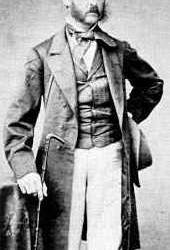
Warren Delano (FDR's grandfather & Opium King)

Sara (FDR's mother) & Philippe Delano in 1864, following their return home from Hong Kong. (Franklin Roosevelt Library)
The crackdown on the Great Binge inevitably began with the signing of the 1912 International Opium Convention to suppress opium smoking and to limit it to medicinal purposes. In the 1920s, in the US, an anti-drug crusade also saw heroin cough drops and cocaine tablets to slowly disappear from stores and bathroom cabinets.
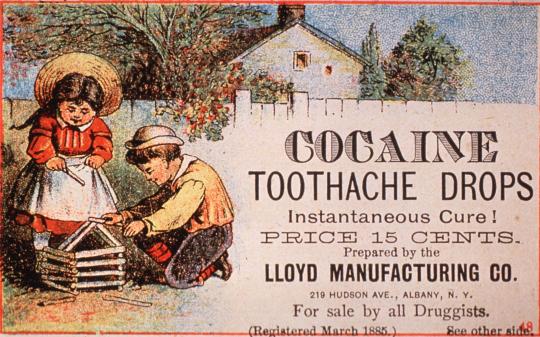
In the 1920s, in the US, an anti-drug crusade also saw heroin cough drops and cocaine tablets to slowly disappear from stores and bathroom cabinets.
During the Great Binge, the most notable drink in circulation was the Vin Mariani, an alcoholic beverage that combined both wine and cocaine.

Angelo Mariani, a French chemist who invented a very popular beverage in 1863.
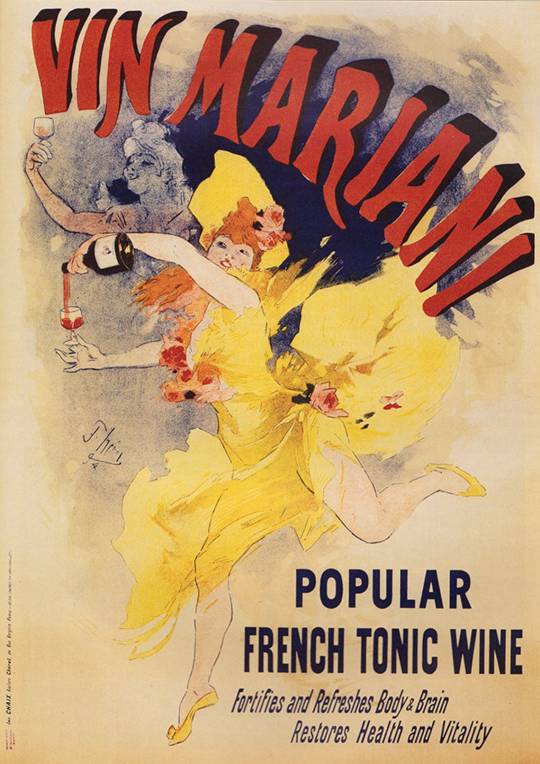
Mariani tonic Wine — lithography by Jules Cheret
The French "Tonic" Wine received endorsements from Pope Leo XIII as well as many of the Belle Epoque’s most famous names, Sarah Bernhardt, Jules Verne and even Queen Victoria were all fans of the drug-infused cocktail.

Pope Leo XIII even allowed his face to be used in Vin Mariani’s marketing campaign. He was very much a brand ambassador, citing that it strengthened him “when prayer was insufficient”.
Mariani's "Tonic" would spent the following century cleaning up its act & rebranding itself to become the world’s most iconic household brand: Coca Cola
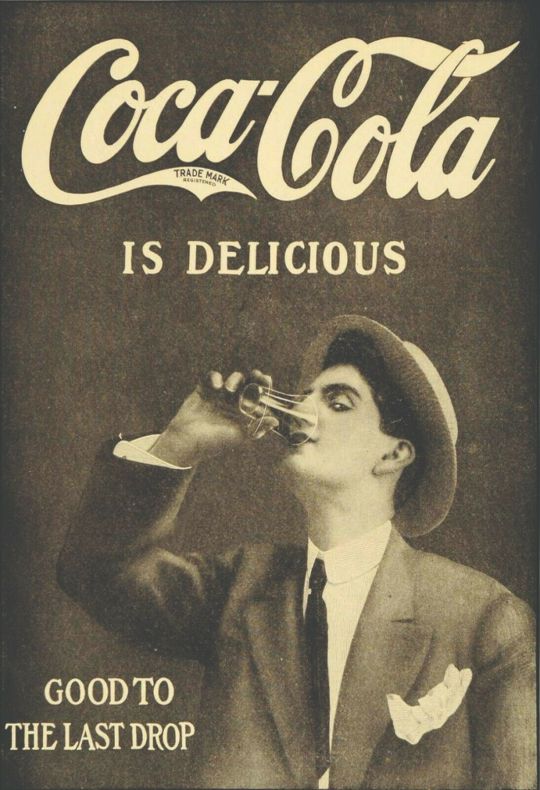
#belle epoque#Beautiful Epoch#paris#Great Binge#cocaine#opium#Morphine#Albert Matignon#Les Morphinees#Georges Moreau de Tours#ivy league schools#Ivy League#Opium trade#princeton#yale#harvard#pipe dream#franklin d. roosevelt#fdr#Warren Delano#Sara Delano#Angelo Mariani#Vin Mariani#Pope Leo XIII#jules verne#queen victoria#coca cola
69 notes
·
View notes
Text

Roots under Beale: The Significance of Beale Street to Memphis Hoodoo History
In the late 1800s, Robert Church, the first African-American millionaire in the South took great interest in Beale Street. After purchasing land on Beale, Church built Church Park and Auditorium exclusively for black Memphians. He also created a recreational center and an upscale hotel. Beale Street was very important to African American life in Memphis as Church wanted to create a safe haven for black Memphians where African American food, music and entertainment could be celebrated.
A community of healers, conjurers and rootworkers began to develop on Beale. Memphians knew that you could visit the right store or juke joint and find someone with the ‘gift’ to provide magical and spiritual help. Beale Street musicians like W.C. Handy began to speak of the hoodoo culture through the lyrics of their songs. Blues singer Lillie Mae Glover known as ‘Ma Rainey II’ became popular on Beale Street as not only a performer but also a conjurer. She would perform rituals and various spiritual workings for other performers on Beale, as well as random customers who knew to seek her out. One of her special abilities was the ability to make mojo hands for blues musicians. While many hands were traditionally made using roots, lodestone and a red flannel bag, Lillie Mae made hers using common ingredients like sugar, flour and a heap of coal.
It became evident that hoodoo was being practiced in downtown Memphis much to the dislike of the white community. Hoodoo and any African based religious practices were compared to savage paganism that threatened the wives and children of the white community of Memphis. Local police were put on alert regarding the threat of hoodoo and ‘voodooism’ as it was commonly referred to.
The Memphis Press-Scimitar reported:
‘The Voodoo business still thrives on Beale Street. Police, looking for a witch
doctor yesterday confiscated a half a sack full of “Stay Away Powder,”
“Easy Life Powder” and “Spanish Luck Drops” being sold to negroes at
25 cents a set. The “Stay Away” powder, supposed to jinx a love rival,
proved to be nothing stronger than flour. “Easy Life” powder appeared to
be a fine grade of ground clay. “Spanish Luck Drops” were more potent.
They were a cheap but stout perfume. All in all, police figured the 25-cent
collection cost the producers not more than a couple of cents.’

Raids on rootworkers and conjurers were quite common in the city. There is record of a number of arrests where hoodoo devotees were arrested and artifacts such as mojo bags and amulets were confiscated and in some cases destroyed in the presence of practitioners. Hoodoo was not only feared but represented empowerment for the black community, something that the times simply would not allow.
The development of a hoodoo community on Beale Street gained the notoriety of the title ‘The Black Magic District’ as many Memphians knew that one could obtain a cleansing, a black cat bone or guidance from the ancestors by visiting the right individual on Beale. In the 1940s gold miners would visit Beale Street looking for conjurers to help them spiritually locate treasure along the Mississippi River. The rising number of Memphians using Beale Street’s healers as a form of healthcare caused some Memphis physicians to become critical and voice offense against the community’s rootworkers. However as writer Keith Wailoo in has noted “Those who invoked spirits to relieve one’s rheumatism or to subdue one’s enemies would not be driven easily from the Bluff city.” Hoodoo was here to stay.

In 1876, Jewish immigrant Abraham Schwab opened one of Memphis’s most iconic businesses on Beale Street. A. Schwab began as a dry goods store offering everything from cloth overalls to blues records. Years later the store began to carry a number of hoodoo related curios. In fact at one point the store was literally bringing in shipments of over one hundred and twenty tons of hoodoo related candles. The hoodoo community in Memphis would purchase oils, candles, incense and roots from the oldest store on Beale. One of my earliest exposures to hoodoo curios came when as a child I was taken into Schwab by my parents. I remember the scent of incense and the colorful collection of candles and curios. It was a wonderland to the senses.
During the writing of A Secret History of Memphis Hoodoo: Rootworkers, Conjurers and Spirituals, I was given the opportunity to visit the store’s archives and see some of the remnants of hoodoo curios and artifacts. A number of old curios from Memphis based companies like ‘LaClyde Lucky Products’ and ‘Lucky Heart Cosmetics’ were preserved in pristine condition saved for their historical preservation. Boxes of dried rattlesnake root, John the Conqueror and assorted herbs could still be found. A member of the Schwab family shared stories of hoodoo practitioners throughout the years and the many testimonies and stories of customers from the conjure community.
These are but a few of the numerous stories about rootworkers and conjurers on Beale Street that were instrumental in the history of hoodoo in Memphis. The history of hoodoo in Memphis is a story of cultural survival that needs to be told.

#memphis#beale street#rootworker#african#kemetic dreams#africans#brownskin#afrakan#afrakans#brown skin#african culture#afrakan spirituality
37 notes
·
View notes
Text
In the 19th century, British colonists faced several challenges in India, [...] [including] malaria. [...] The imperialists needed an answer to the problem and they found it in quinine. [...] [T]he British promptly embraced quinine, consuming tonnes of it every year by the mid-1800s. [...] Quinine was so bitter that soldiers and officials began mixing the powder with soda and sugar, unwittingly giving birth to “tonic water”. [...] [I]t prompted Winston Churchill to once proclaim, “The gin and tonic has saved more Englishmen’s lives, and minds, than all the doctors in the Empire.” [...] If by some good fortune malaria did not claim them, plague, cholera, dysentery, enteric fever, hepatitis or the unforgiving sun could. Preserving and protecting the body was [...] crucial to the success of the colonial project. As historian EM Collingham aptly summarised in her study, “The British experience of India was intensely physical.”
One way the colonists tried to deal with this challenge was through food and drinks. “The association between food and the maintenance of health was a concern of Anglo-Indian doctors, dieticians and the British authorities throughout the duration of colonial rule [...],” writes Sam Goodman in Unpalatable Truths: Food and Drink as Medicine in Colonial British India. [...]
---
The Medical Gazette, for instance, recommended treating dysentery with a “low diet” comprising thin chicken soup [...]. Botanist-physician George Watt too extolled the virtues of sago. In A Dictionary of the Economic Products of India (1893), he wrote that sago is “easily digestible and wholly destitute of irritating properties” and in demand [...]. For fever, weakness and sundry ailments, beef tea [...] was considered an ideal remedy. And for cholera, The Seamen’s New Medical Guide (1842) prescribed brandy during the worst of the sickness and half a tumbler of mulled wine with toasted bread and castor oil [...]. Ship masters and pantrymen would stock their vessels with foods with known medicinal benefits such as sago, arrowroot, lime juice, desiccated milk and condensed milk (the iconic Anglo Swiss Condensed Milk tins, later known as Milkmaid, enjoyed a permanent spot on British ships).
---
Businessmen too recognised the precarity of life abroad and realised that therein lay a perfect commercial opportunity. By the 19th century, numerous companies had cropped up across Europe, including in England, that would sell food in hermetically sealed tin containers.
One of these was Messrs Brand & Co. Recommended highly in Culinary Jottings for Madras by Colonel Robert Kenney-Herbert, Messrs Brand & Co had several offerings [...]: essence of beef, concentrated beef tea, beef tea jelly, meat lozenges, [...] potted meat, York and game pie, and A1 sauce [...]. Another company, John Moir & Sons, focused mostly on canned soups [...], selling oxtail, turtle, giblet and hare.
---
By the late 19th century such was the popularity of canned foods that rare would be the pantry in a colonial home that didn’t store them along with medical provisions like opium, quinine, chlorodyne and Fowler’s solution (an arsenic compound). [...] As Flora Steele and Grace Gardiner wrote in The Complete Indian Housekeeper and Cook, “A good mistress will remember the breadwinner requires blood-forming nourishment, and the children whose constitutions are being built up day by day, sickly or healthy, according to the food given them; and bear in mind the fact that in India, especially, half the comfort of life depends on clean, wholesome, digestible food.”
To assist the British woman in this ostensible duty, there were a number of cookbooks and housekeeping manuals [...]. The Englishwoman in India, for instance, published in 1864 under the pseudonym A Lady Resident, had a whole section with recipes for “infants and invalids”. These included carrot pap cooked into a congee with arrowroot [...] and toast water (well-toasted bread soaked in water). Steele and Gardiner too had a few recipe recommendations [...], including champagne jelly (“most useful in excessive vomiting”) and the dangerous-sounding Cannibal Broth (beef essence), which they said should be consumed with cream [...] to treat extreme debility and typhoid. [...]
---
One dish born of this encounter was the pish pash. The pish pash is considered an invention of the colonial cook, who adapted the kedgeree – the colonial cousin of khichdi – into a light nursery food. The famous Hobson-Jobson defined it as “a slop of rice soup with small pieces of meat” [...]. None other than Warren Hastings, the first governor-general of Bengal, gave confirmation of its efficacy when in 1784 he wrote to his wife from the sick bed [...]. There are enough records to show that the imperialists counted marh (starch water from cooked rice) and bael (wood apple) sherbet among their go-to remedies and benefited from the medicinal qualities of chiretta water and ajwain-infused water.
---
Text by: Priyadarshini Chatterjee. “How food came to the rescue of the British in India.” Scroll.in (Magazine format). 26 April 2023. [Bold emphasis and some paragraph breaks/contractions added by me.]
106 notes
·
View notes
Note
Hey totally-official-VR! Can you tell us anything cool about the railway station in Loimaa? I hear the building is of a crop of station buildings that's rather rare to find these days :)
Hi totally-unknown-anon! The Loimaa station is indeed an interesting one, and certainly rare enough for Museovirasto (the Finnish Heritage Agency) to have listed it as a nationally important building.
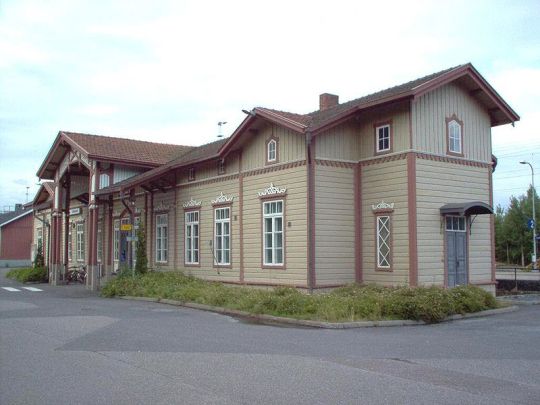
Street facade. TeVe, Wikimedia Commons.
So. The Loimaa station is one of the original surviving stations of the Toijala–Turku line, built in 1876. It's also one of the numerous station built for operational reasons: the location, near the bridge passing Loimijoki, was approximately at the halfway point of the railway. Thus, despite being built in the middle of a forest, the Loimijoki station (as it was originally know) was the only III class station on the line (Turku and Toijala were II class, all others were IV or V class).

Platform facade. Mikkoau, Wikimedia Commons.
The station building is again likely designed by Knut Nylander, who was VR's in-house architect at the time, but the plans are unsigned. Somewhat unusually for the time, the plans are unique; usually Nylander and his successors produced type drawings that were copied for numerous stations along the same line and even across different lines to save costs. The Loimaa station was a one-off, and in the Renaissance revival style that was typical of Nylander's later work for the Pohjanmaa line, but contrasted with the other stations of the Toijala–Turku and Hämeenlinna–Tampere lines (which were built simultaneously). To my eye the station also has some similarity to the long since demolished old stations of Lahti and Viipuri, but of course I'm just an enthusiastic amateur.
Also somewhat unusually, the Loimaa station remains largely unaltered from the original; commonly, stations were built with a minimal budget and needed to be expanded later on, but this was never necessary for Loimaa.

An undated view of the station area, presumably from the late 1960s or the 1970s. The station itself to the left, behind the Dm7 railbuses and Dm9 fast train unit. Next to it is the freight station. Suomen rautatiemuseo.
After construction of the station, a town quickly sprung up around it, becoming the most important centre of the area and it is today the administrative centre of the Loimaa municipality.
Had history played out differently, Loimaa could have become a major intersection station, as from the late 1800s until the 1950s there were plans to build a direct line from Helsinki to Pori, which would have crossed the Toijala–Turku line at Loimaa. From the point of view of architecture it's perhaps a good thing this didn't happen, as a major elevation in status for Loimaa would have probably resulted in the station building being torn down and replaced by a larger one.
43 notes
·
View notes
Text
Traintober 2023: Day 17 - Holiday
How Sudrian Tourism has Evolved:

Sodor has changed majorly thanks to the publication of the Railway Series and the subsequent Television Series, both of which propelled the island and its railways from being just another part of the UK into a tourism juggernaut. But the fact of the matter is that Sodor did not immediately transform from being an insignificant island on the coast of Cumbria to one of the most popular tourist destinations in the United Kingdom overnight – so how did it all change?
To understand, we must go back to the 1500s, and the Protestant Reformation in England. At the time, Sodor was part of the English Crown – but far looser than its Irish and Welsh neighbours. Due to its small size, rough terrain and low population, King Henry VIII was far less interested in confiscating Catholic land on the island than its surrounding areas. This was in part due to the both Sir Geoffrey Regaby and Bishop Michael Colden, who managed to guide Sodor away from the Lincolnshire Rising and the Pilgrimage of Grace. Due to their remote location and general poverty, Thomas Cromwell never visited Sodor, and Cronk Abbey was never closed. For its part, St Luoc’s Cathedral at Suddery was ‘converted’ to a Protestant Cathedral in 1537, but continued holding Catholic mass. This was done by holding the two religious ceremonies one after the other.

As Sodor was now one of the few parts of the British Isles that had a Catholic church and direct line to the Papacy in Rome, it became an ‘underground’ tourist destination as a new British site of pilgrimage, frequented by Catholics looking to attend mass at the Suddery Cathedral. In return for continuing these ceremonies, Sudrians became more devout to the crown – in particular to Queen Elizabeth I, and by 1603 the Catholic mass had been all but forgotten. This did not end the attractiveness of Sodor as a religious destination, due to the caves of Saint Machan and several other holy sites that litter the island; the numbers were not large, but they did lead to a number of important connections, especially with Ireland, the Isle of Man and English ports.
The next phase of Sudrian tourism came in the 1860s, when the Skarloey Railway found the long-forgotten Skarloey lake and hidden hollow. Rather than explain it, I think I’ll just use the description that the Reverend Wilbert Awdry did:
“Spas were popular at the period and offered the possibility of a lucrative passenger business. Skarloey’s mineral springs and sheltered situation took hold on the minds of some members of the Board, among them Shamus Tebroc who conceived the idea of developing Skarloey as a spa. An hotel and a number of villas were built as a speculation, and the gravity worked incline which had been installed for the conveyance of materials was retained and up-graded for coals, merchandise, and passengers’ luggage.”
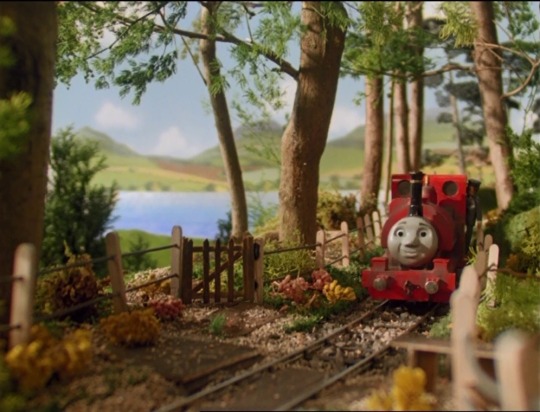
Skarloey became the first of the Island of Sodor’s tourist hotspots, especially due to its proximity to Culdee Fell and Saint Machan’s cave. The popularity of the spas was good for a time, but began to fall off as the bad fortunes of the Sodor & Mainland Railway continuously hurt the Skarloey Railway’s tourism campaign with delayed and cancelled trains, ratty carriages and even standoffish staff. This led to Skarloey becoming a local holiday destination instead, but even that began to slow down as WWII loomed.
On the other side of the island, the Mid Sodor Railway also began heavily advertising their railway to holidaymakers across the UK, but to a somewhat better result. The Isle of Man Steam Packet contract the railway picked up led to a large influx of tourists across the late 1800s and early 1900s, up until the 1920s. The railway’s ability to reach the walled city of Peel Godred and the cave of Saint Machan (via the Culdee Fell Railway) made it a very attractive destination for tourists, though this would change at the end of WWI.

The advent of relatively cheap international travel via ferries in the 1920s did a lot of damage to Sodor’s tourism economy, as their major markets in England preferred to travel to either the Continent or the Lake District – or even as far afield as the United States. Sodor instead switched to being primarily an agricultural and resource-extraction economy, with some manufacturing. This continued throughout WWII.
Which leads us to May 12th, 1945. The Three Railway Engines was published – in colour – in the UK. It achieved enough success to lead to the continuation of the series in 1946, and again in 1948, and then again continuously until 1972. These twenty-seven years’ worth of publicity for the island and its railways had a massive effect. Skarloey was rediscovered and the budget-conscience holiday maker of the 1960s chose it for its low prices, high quality, and picturesque scenery, turning around the railways needed to reach it. The Culdee Fell Railway also saw an uptick in traffic as the Peel Godred Railway brought in more passengers than the old Mid Sodor Railway had.

Furthermore, tourists came to see the engines, a phenomenon not seen before in the island’s tourism industry. Insignificant towns such as Dryaw, Brendam, Crosby and Glennock became infinitely more popular as the sites of incidents in the Railway Series, or as convenient locations to stay for travelling the island. The biggest success story of the island’s cities was Cronk however. Cronk grew massively from the tourism trade as the most central location on the NWR to reach the various tourist destinations of Sodor – even Awdry takes a moment to mention ‘The Crown of Sodor’ Hotel on Sigmund Street due to its prominence as a hotel on the island.
This large influx of tourists was however of a majorly local source – the UK, parts of continental Europe and a relatively low number from North America. It wasn’t until the advent of cheap international jetplane flights in the mid-1970s and the debut of the TV series on October 9, 1984.

This debut is what changed everything.
The Thomas and Friends Television series was an international success, with translations into a number of languages (eleven by Wikipedia’s count) and broadcast around the globe. This, coupled with the opening of an enlarged airport at Vicarstown (which had been constructed in 1941 by the RAF and expanded by Vickers in the 1960s. The airport itself had been bought by the NWR in 1982 (probably in anticipation of the TV series) and began receiving jetliners from across the world as early as 1986.
Today, Sudrian tourism is one of the largest income producers in northern England due to its international status crafted by the Thomas & Friends series. The island is a popular tourist attraction for both railfans and Thomas fans, as well as religious pilgrims, spa enthusiasts, hikers, ramblers and historians. The airport at Vicarstown has been linked into the NWR via a spur line, and more recently a number of signs on the island have been converted to include secondary and tertiary languages, for better interpretation.
Sodor reached its best numbers for international tourists in 2019, when over 1.5 million people visited the island, making it the third most visited tourist destination within England, beating out Birmingham. The secret to it’s recent further uptick in visitors is the opening of a number of museums, galleries and other cultural sites on the island, as well as a strong advertising campaign that focused on the island’s major tourist draws, which are:
The North Western Railway, Skarloey Railway, Culdee Fell Railway and Arlesdale Railway from the Railway Series book and subsequent Television series
A pre-Norman era Abbey at Cronk, one of the oldest of its kind in Britain
Suddery Cathedral, which continues to be one of the few remaining pre-reformation cathedrals in Britain
Several Norman-era castles, including a completely intact castle at Harwick
The Walled City of Peel Godred
The caves of Saint Machan
Culdee Fell
Henry's Forest National Park
Skarloey and its spas
Museums, galleries, and cultural centres
The Standing Stones of Killdane.

This advertising campaign brought a greater variety of tourists to the island, especially those from North America.
The island was badly affected by the advent of the Coronavirus pandemic, which saw the high tourist numbers of the previous decade prop by over eighty percent, which forced the island to once again consider restructuring their economy around agriculture, manufacturing, and resource extraction. This eventually was decided against, as tourist numbers have slowly picked back up through 2022.
Sodor has been greatly affected by its rise to one of the most prominent tourist destinations in the UK, including a number of hotels being built on the island – many of which are converted manorhouses – as well as several upgrades made to the transport systems of the island, with updated ferry services between the island’s major ports and locations in the UK and Ireland, as well as the railway building a special line to the island’s main airport, new tram and bus services within the major cities on the island. The island’s railway system has also seen upgrades throughout the latter half of the 20th century, including a third track being added to the mainline, new signalling systems and a number of extra connecting services to cities in the UK, such as Manchester, Birmingham, Carlisle and Preston.

Sodor has grown drastically as a result of its tourism industry and is today an international tourism hotspot. The island continues to be popular into the modern day, as a result of strong advertising and a pointed diversification of tourist offerings on the island to help the island’s tourism industry grow and bring in profits for the island’s people.
Back to Master Post
#fanfiction writer#weirdowithaquill#railway series#thomas the tank engine#railways#RWS analysis#Thomas and friends analysis#island of sodor#tourism#mid sodor railway#skarloey railway#traintober 2023#traintober
31 notes
·
View notes
Text

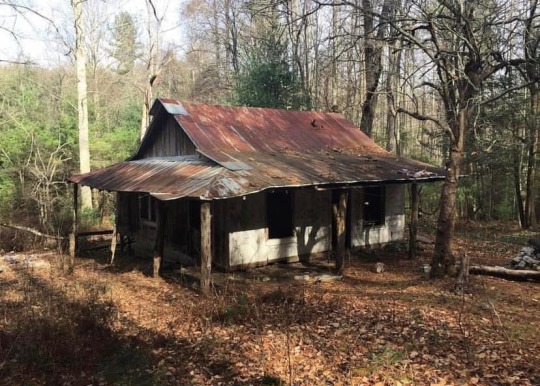



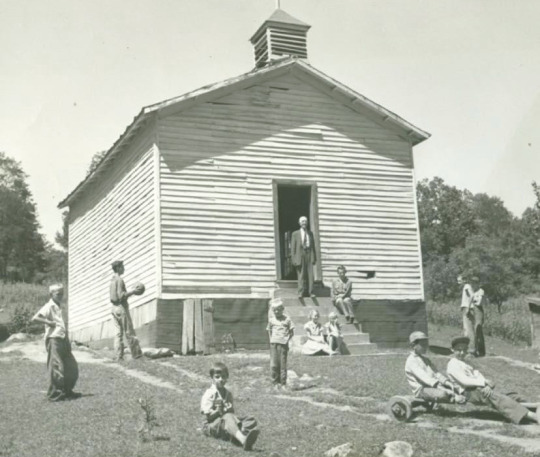


The Ghost Town of Lost Cove:
Lost Cove is located in Yancey County, North Carolina. What once was a thriving mecca for moonshine and timber, Lost Cove is now a ghost town deep in the Pisgah National Forest. Lost Cove was the home to a small community of people from the mid 1800's to the 1950's and it is estimated that around 100 people used to call this town home. Now, all that remains are abandoned homes, rusted cars, crumbling rock walls, and the tombstones of former residents from over a century ago.
What Happened:
In the late 19th and early 20th century the town prospered from farming and logging operations. This brought the railroad into the Blue Ridge community, and with it, more residents. During prohibition the area became a haven for moonshine producers. Due to it’s proximity along the North Carolina and Tennessee border, local law officials couldn’t agree on who had jurisdiction to police the area, which emboldened moonshiners to move to the region for production.
Eventually the timber from logging operations ran low, which led to the decision to halt the railroad service that brought passenger trains through the area. Despite a wagon road, a proper road was never built, and the loss of train service isolated the town residents making it difficult to receive supplies. All of that, combined with the area’s rough terrain, led to a gradual departure of residents until the last known family left in 1957.
Many of the structures that were left behind were consumed by a fire in 2007. However all was not lost (pardon the pun), and adventurous hikers can still find the ruins tucked deep in the forest. You can visit the remains, but only by hiking into the area. There are a couple of ways into the cove, but each requires a full day of in-and-out hiking. The slope can be rather steep in some areas as well so expect dramatic elevation changes
Getting here is a journey in itself. There's two main routes to Lost Cove. The easiest route is the Lost Cove Trail which you'll find from an unlabeled trailhead off Forest Service Road 278. The 2.5-mile trek starts with ascending two miles up a gravel road then leading down Flattop Mountain, eventually ending at Lost Cove. Once here, you can explore the many abandoned buildings, cars, even a small cemetery situated on top of a hill. All places here once breathed with life and although the last remaining resident didn't leave until 1957, it feels as if it's been abandoned for hundreds of years.
•Learn more at https://www.brendajwiley.com/lost_cove.html
•https://www.fs.usda.gov/recarea/nfsnc/recarea/?recid=48550
•https://www.appalachianhistory.net/2021/04/the-vanished-community-of-lost-cove.html
(From Wikipedia and Onlyinyourstate)
#appalachian#appalachian mountains#north carolina#appalachian culture#appalachia#western north carolina#the south#nc mountains#ghost town
31 notes
·
View notes
Text

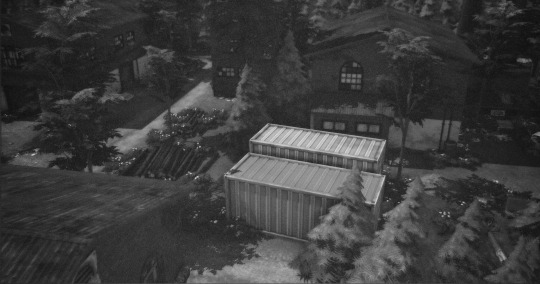
The History of Millhaven
In the late 1800s, the Davis family owned a large amount of farmland in what would later become Millhaven, Oregon. Seeking to capitalize on the area's natural resources, they built a mill. But they didn't stop there. The Davis family also invested in creating an entire town around the mill, with homes, businesses, and public services to attract workers and their families.
Their efforts paid off. Many people looking for work flocked to Millhaven, eager for a chance to make a living there. The town quickly grew and became a hub of economic activity. The Davis family's influence and power expanded along with it, as they controlled much of the town's infrastructure and resources.
However, the working conditions at the mill were notoriously bad. The Davis family cut corners and ignored safety regulations, leading to long hours, low pay, and frequent accidents. Many workers suffered from respiratory problems, hearing loss, and other ailments as a result of their work at the mill. Despite protests from the workers and their families, the Davis family refused to improve conditions or compensate the victims.
In the year 1909 the workers at the mill had finally had enough. Inspired by the growing labor movement in the United States, they organized a strike demanding better pay, safer working conditions, and the right to unionize. The Davis family responded with violence and intimidation, using their control over the town's law enforcement.
The situation quickly escalated, with the workers forming a picket line outside the mill and the Davis family bringing in scabs and armed officers to break the strike. The resulting violence led to several deaths and injuries, and the workers' demands remained unmet.
The strike received national attention, with labor leaders and politicians speaking out in support of the workers. The Davis family's reputation was tarnished, and they were forced to negotiate with the workers. Eventually, a compromise was reached, and the workers won some concessions, including a small pay increase and improved safety measures.
The mill largely expanded by the 1950s. The legacy of the mill and the Davis family's corruption continued to haunt Millhaven for decades. The toxic waste dumping that began in the 1970s only added to the town's problems, polluting the environment and causing health problems for many residents. The mill was eventually forced to shut down but the Davis family still held power over the town.
In 2023, the current mayor of Millhaven is Michael Davis, a direct descendant of the Davis family that founded the town. Michael's brother, Adam, is the pastor of the only church in Millhaven, which has long been a center of community life in the town. The Davis family still holds a significant amount of power over Millhaven, with Mayor Davis using his position to further their interests.
Mayor Davis is currently working on a plan to gentrify Millhaven, which he sees as a way to revitalize the town and attract new investment. His plan includes the construction of luxury apartments and homes, a new megachurch, and a shopping center, all of which would be aimed at wealthier residents and visitors.
However, the gentrification plan has been met with resistance from many of Millhaven's long-time residents, who fear that they will be pushed out of their homes and their community. The majority of Millhaven's residents are low-income, and many have lived in the town for generations. They worry that the new development will only benefit outsiders and leave them stuck with a higher cost of living that they cannot afford.
97 notes
·
View notes
Text
The Devil's Den
Chapter 23: In Which Fates Begin to Spin Pt. 2
You can read this also on Ao3 at: https://archiveofourown.org/works/46831621/chapters/117962293
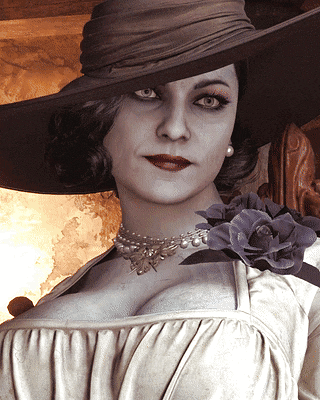
The deep tunnels were some of the first underground passages built by the vampires in this part of the United States. They had been in use since the early 1600's but were pretty much abandoned by the late 1800's when the new passageways were finished.
These were narrow, poorly lit (if at all), and had piss poor flooring compared to the new tunnels that were used today. They smelled. They were dingy. And Alcina was remembering all too well how much she disliked these bloody passages.
While she was grateful she had never had them sealed off, she figured it was entirely possible at some point in the future they could have cave-ins.
After the eighth or ninth cobweb she ran face first into, Alcina stopped and spat.
"Fuck me," she growled, "did Donna pack a goddamn bloody torch by chance?"
Mateo fumbled with his bag while Karl repositioned his hat with a huff.
"She did," he replied, lighting the top with his lighter.
"Ya know if you wore that big ol' hat of yours you wear to council you could clear the whole tunnel for us," Karl remarked as he leaned against the musty wall.
Generously ignoring his remark, Alcina grabbed for it smugly letting the light illuminate her unamused façade.
The flame washed the dark dank walls with it's brilliant orange.
"Bless her and her mind," she segued, "I'll happily burn down the rest of these tunnels once we're through, but in the meantime I'd like less unforeseen spiderwebs caked on my face."
Karl snorted and began to open his mouth.
"Don't. Even. Start. Heisenberg," she snarled before he took his breath.
"Got it," he replied throwing his arms up with his tart smile.
The trek seemed to take much longer than it did, but when they reached their destination the sun was indeed beginning to peak.
The mouth of this tunnel in Bridgeport lead directly into an old abandoned warehouse the lycans had fortified as a stronghold back when the wars between clans were still raging.
It was completely boarded up now to accommodate their vampire allies, so being there in the daylight was no threat to them at all. There were several sleeping quarters, a kitchen, a small medical facility, a blood wine reserve in storage containers, and a weapons locker on the second floor. Otherwise it was quite large and spacious and very wide open.
It was still a little too grungy for Alcina's liking, but she'd let it slide.
Gerard, Mateo, and Karl began laying down their bags on the nearest table off the entryway. Alcina's senses were on high alert but felt nothing of importance anywhere near.
With a soft breath she lay her bag with the rest and began pulling out its contents.
"Well, as much as I hate to leave you night dwellers, I best be gettin' on my way to see if I can find Mitch and the rest of my men."
Alcina regarded Karl with a swift nod, "I know you don't like comms, but are you sure you won't take one?"
"I don't like shit in my ears. Gimme one of those hand held ones..."
Gerard handed it off to Karl who snatched it and threw it in his pocket.
"The distance on those is much smaller, so if you're - "
"Out of range I can't get in touch, yeah yeah, I know. Technology is wonderful and full of bullshit all at the same time."
Alcina smirked, "we will patiently await your return."
"As if you had any other choice," he winked, tipped his hat, and dashed off.
She still didn't like this. Any of it.
Heisenberg was self sufficient just like she was, but without really knowing what they were up against, or how many, this was not pleasant going into blind. Blake hadn't been much help with the plethora of information; he was drowsy and weak from the attack, and according to his story he barely got a glimpse of the assailants as it was.
And Mitch. She was worried about Mitch.
Another warrior who was well worth his weight in gold on the battlefield and yet there was radio silence on his end. She was dreading the news, and even more so having none at all.
And you. She was missing you.
Fuck. Get it together.
Alcina ruffled her hair and turned to her guards.
"Lucky for us there's only 3 entrances to this godforsaken place. We'll each take post within safe distance of one. Mateo, please radio Donna and let her know we've arrived."
Mateo and Gerard nodded and headed in different directions, Alcina taking her time finding hers.
Once at her post; pistol on her hip, knives strapped to her thighs, and an outright spiteful attitude, Alcina perched on the beat-up kitchen counter not too far from the bolted door.
This place felt dead and vacant of any energy at all and she was at least able to sigh some relief at that. And while she had plenty of silence and time to think, she occupied the space in her mind with you. A slight smile took her deep red lips as she wondered what you were up to. Waking and readying for work, already there maybe? Perhaps you were thinking of her as she was you?
Alcina took a sharp breath and tapped her nails on her arms.
~
6 hours and 42 minutes had passed and not one word from Karl.
No movement of any sort had been heard outside.
It was too quiet and she was growing restless.
Instead of calling for Mateo, Alcina left her post and went to find him to request the radio earpiece.
"No word from anyone?" she asked politely as he handed it over.
"No, my Lady; nothing but silence since I spoke with Donna when we arrived."
"And no signs of life over on this end?"
He shook his head and she nodded in acceptance, "I suppose silence is better than chaos."
Alcina began placing the piece in her ear, nodded to Mateo and headed back to her post.
"Donna?" she spoke, holding her finger to the talk button.
Silence.
"Donna - I hate to wake you, but I'm bored out of my wits."
Silence.
She huffed and slowed her steps the closer she got to her spot.
"You know, you're lucky I like you at all otherwise I'd never answer this call," Donna's voice finally sounded on the other end.
Alcina chuckled quietly. She sounded tired.
"Oh please. You really expect me to believe you've been asleep?"
"Of course not, but that still doesn't disregard the fact I'm quite tired. I feel like you; I can't count how many glasses of blood wine I've had to keep my nerves at bay."
"Well if it makes you feel any better I'm holed up in a dusty, grimy, tinny, iron-rusted smelling warehouse with no comfortable chairs. And I forgot my cigarettes."
Donna's gasp was quite audible, "Oh dear, what ever will we do?"
They shared a laugh but it turned quiet fast.
"Did the girls find you?" she asked even more hushed than before.
"They did. I have them doing the bare minimum; ears and senses alert, but not going any farther from home than necessary. If something arises they know what to do. Your daughters are smart. I have nothing but faith in them."
Alcina smiled at that.
"As do I. But it doesn't lessen the fear of them meeting trouble they can't disarm."
"Any progress there?"
"None. Heisenberg left the moment we arrived and we've neither seen nor heard anything since. It's quiet here. Nearly too quiet, and I don't know if my apprehension is merely nerves or something to be seriously considered."
While Alcina always appeared a glorious marble pillar; unmovable by even the strongest of Earths' forces - she was a highly intuitive, calculative, questioning and wise individual. Her gut feelings had never steered her wrong and her ability to visualize and anticipate all matters were a steadfast quality. Donna knew her friend was sensing exactly what she was needing to.
"I think your hunches deserve their debate time. Keep listening."
The pause gave Alcina a moment to chew through Donna's words. There was more happening inside of her these days which didn't help the cloudiness already engulfing her.
"Well... I suppose I'm just -"
An eruption of bangs and hollers came echoing through the warehouse and Alcina jumped from her perch.
"Stay close to the line - somethings happening!" she urged as she tore the piece from her ear, stuffing it in her sleeve pocket and dashing through the halls towards the noise.
As she rounded another corner and found herself in the main corridor, Karl, with a slumped and mangled looking Mitch and three other lycans, were stumbling through the door Gerard had been guarding.
"Here! Get him to the medical bay!" Karl growled as the vampires came to their aid.
Mitch was bloodied, bruised, cut up, and grunting as they moved him off. The others seemed just fine and quickly followed.
"Why didn't you radio for assistance?!" Alcina hissed as she fell in behind the line.
Karl barked; "Woman! Does it looks like I had an extra hand to do that?! It took me forever to find their fucking camp, then it took me forever to get everyone where I wanted them, get a plan in order, AND get him back here as quickly as possible!"
She let this slide and roll off since he was clearly upset and enraged. There was so much more to this story and she was impatiently waiting to ask.
Everyone began the bustle in the medical quarters to get Mitch taken care of. Gerard and Raul, one of the lycans, began tending to the gashes and slashes all over him. Alcina rushed for the healing elixirs in the med cabinet and brought back two of the most potent.
"Here," she said to Raul, handing him the viles, "he's not going to like these but it's the best we've ever engineered for your kind."
Alcina stepped back and allowed the fuss to ensue. Karl was pacing and rubbing his stubbly face and rugged beard off in the corner.
She approached him carefully.
"You're not gunna fuckin' like it," he mumbled under his breath, sensing her closeness.
-
While you weren't completely bummed out, you were still pretty sad and down at the fact you were going to be missing your vampire something terrible by the time this was all through. It hadn't even been a whole 24 hours since she'd been gone but you were feeling it.
You hummed a little at how pathetic it felt. But then again, you weren't going to scoff at it either.
You loved Alcina.
Deeply.
What of it?
Another deep sigh tumbled out of your lungs as you tossed your gaze out the window of your office.
You were bored.
Again.
It was only 11 o'clock and you were ready to go home and find some other way to distract yourself.
The day had started out with a decent patch of fog sitting on the city. You kind of enjoyed it from time to time but it only fueled the knocking melancholy. Luckily you'd found an old portable cassette player way in the back of your closet that you hadn't seen since you were 13, and to your utter surprise it still worked. So yeah, you swiped the tapes of your lover's sweet voice and took them to work with you. Granted, today had been a bit of a shit show and you hadn't had a chance to actually listen yet, but now was as good a time as any.
You plugged your earbuds into the port, slipped them in your ears and hit play.
Ah. Yes.
There was that stunning voice coming to soothe and lull you into a peace and calm you were hungrily seeking.
Two songs later you had blissfully ignored your email, phone, and office messenger.
Oops. Oh well.
Without another care in the world you excused yourself from your desk and went outside to the courtyard where there was a quaint little spot with grass, a couple trees, some flower beds, and 4 benches to sit on. You chose the patchy green and yellow grass.
Before long the clouds that had painted most of the sky were being bled apart by the stroke of the sun, and the heat and warmth felt even better with the music wafting through your brain.
You wished Alcina was still mortal so you and she could enjoy the summer sun together. Walk the paths of Central Park, nap in the grass, smell the flowers and watch the sun trek across the sky like a wandering traveler.
You sighed.
As a particularly lovely song came to an end (one which you really needed to ask Alcina what it was since it was in French) your palms began to itch a little. As the odd sensation took over your concentration, you peered down after lifting a hand and noticed the grass, which you were pretty sure was yellow before, was a brilliant bright green. The blades were springing back up to life from being pressed down by your weight and you blinked a couple a times.
Weird.
Just another occurrence to add to the list, you thought.
After you had spent your half hour lunch outside basking in the sun, you finally took the buds from your ears and rose. The sky seemed bluer and brighter and you felt a hundred times better. With a new smile on your face you meandered inside without any rush at all.
What you didn't notice was that the grass, which was indeed yellow and shriveling from lack of attention, was now brimming and spreading with the same bright green you had seen before.
And above, in the trees, were the 6 crows that had followed you from home.
-
"The group of eight I had? Dead. All dead, except Mitch and Blake. The group of twenty I sent? Eighteen are left. Eighteen. None of these fuckin' guys can tell me what the fuck attacked them. NONE of them can tell me where they went! These fucking rogue vampires, if that's what they fuckin' are, are more like mutant goddamn blood-sucking roadrunners from a cartoon! Explain to me how three, maybe more, of these bastards can swoop in, kill my lycans, and not leave a MOTHER FUCKING TRACE!"
Karl's rage was understandable.
And warranted.
Alcina sipped on a glass of blood-wine as she listened to him vent.
He was right; she didn't fuckin' like it.
"I've got them stationed like a fucking tank this time. If those fucks hit again, they won't stand a chance. And if we do get ass-fucked again... then I don't know what else to do."
"If they do strike again tonight, we'll be there for reinforcement - I'll be there for reinforcement. I'm as eager as you to snare one of these cretins and get to the bottom of what is happening," she eyed him intently as she prepared her next sentence, "as much as I detest what I'm about to tell you next, I'm afraid with the casualties that have been sustained I have no choice but to alert Mother Miranda."
"Oh fuck that bitch! What the hell you gotta tell her for?!"
"I'm afraid Alcina is right, Karl," Donna replied from the radio in the middle of the table, "this has gotten too far to not involve her, and it is her territory this is happening in."
Alcina huffed.
"If the chain of command were different, believe me, I'd never involve her in anything if at all possible. But there have now been deaths on your side; this makes the situation nose dive from speculation to a direct hit into acts of war. She has to be alerted. Until we know for sure what is happening, all of us need to be on high alert."
With a growl reflecting her own feelings on the matter he slumped in the chair adjacent to hers at the table in the kitchen.
"How many decades of peace, and now this?" he grumbled.
"Whatever the case, we can win again but we can't win alone."
Alcina looked at the clock as she finished her glass. It was almost night fall.
Mitch was under sedation in the next room with the lycans watching over his condition while the vampires were still on internal patrol.
Eying him once more Alcina stood from the table, "let's get ready. I want to be out that door the minute the light dies out. Donna, wait on alerting Mother Miranda for now... I'd like a little more information to report if at all possible."
"Understood. Be careful out there."
The journey to the lycan camp was tiresome and she now understood Karl's plight to find it. The maze of tattered, mangled trees and bushes to where they had relocated was so off the beaten path even she was completely disoriented by the time they arrived. They had to backtrack several miles nearly to the Saugatuck Reservoir to the North East of where the warehouse was and it was a task getting there by foot, through the city, and then the countryside.
They were welcomed with guns to the face as they made their way in. Karl was quick to disrupt the tension and escorted the group within the camp.
Alcina was impressed by the stakeout. Karl had indeed set them up to a decently impenetrable fortress of feral, pissed off lycans.
The somberness of the night set in harder as they passed by their deceased brothers and sisters. They had gathered them all under a tent and were prepping them to be sent back to their homes.
War was ugly. No matter who was fighting it.
Needless death.
Flashbacks to the many battles she had fought in came flooding through her thoughts. She had always been one of the lucky ones. She got to live and fight another day while many countless others of her kind were slain. While vampires mourned differently than humans, the pain was felt just as deeply, the scars ran just as thick. The physical wounds may not have carried on through the years but the torment of bloodshed stained hearts and minds forever.
Alcina felt for their loved ones.
They reached the base tent and entered. Everyone was locked and loaded to the teeth. The general of this group, Sylvia, greeted them with a much more pleasant demeanor than Alcina was expecting.
"Lady Dimitrescu, a pleasure to meet you," she stated with a slight bow.
"Thank you General, I wish only the circumstances could be drastically different," she replied with a gracious nod of her own.
"Fucked up times call for fucked up measures I guess - do we have a plan of action? My men are gnashing for revenge, we're ready to move."
The smaller, but very built, composed, and fiery commander seemed to be staring the vampire Matriarch down. In a humble, expectant kind of way.
Alcina liked her already.
"Hold your horses, Syl, we're all in the same boat here and we're doing all we can to keep the water out," Karl interjected.
"No, she's right," Alcina defended gently, "we need a plan. As complicated and difficult as it is to make one currently, we need something."
"Well fuck, I'm all ears," he shrugged.
Before another breath could be taken by anyone, Sylvia was already speaking again.
"Excellent. One of my scouts thinks he may have found an entrance to an underground cave system up along the reservoir that these fucking ghosts might be coming from. I told him to stay back and not investigate until you arrived."
"Show me," Alcina stated blankly without a second thought.
10 lycans, Alcina, Karl, Sylvia, Gerard and Mateo stalked their way through the woods. The air was eerily still as the group came upon what definitely appeared to be the beginning of a cave into the ground in the middle of this tangled forest. The decently sized black hole in the earth was surrounded by boulders and rock that seemed to be less than natural for its whereabouts, like a gigantic mole had sprung its way up from the depths.
No one spoke as they stood shrouded there several hundred feet away in the denser part of the woods.
The moon was low in the sky and there was barely a breeze breathing through the leaves. Everyone had their guns aimed at the mouth, silencers gleaming in the low light of the moons rays as Alcina let her eyes and senses come to life.
Nothing.
There was nothing she could detect anywhere.
And yet... yes, there was.
Her gliding silent steps took her slowly from the group as she slinked her way through the brush and into the minimal clearing near the jagged boulders of the cave.
Karl's first instinct was to reach for her and stop her, but she was too quick and he didn't want to stir the night anymore than need be.
Sylvia, taking cue, quietly motioned for her men to spread out around the area to offer surrounding and protection.
The tall intimidating sight of her in the darkness, golden glow in her eyes, and fierce expression on her face made even the lycans feel the need to shudder off her radiating prowess.
They all stationed and waited.
And nothing.
Nothing at all.
And then the sound of a sharp hiss far from her left hooked her attention right before a blur slammed into her, throwing her unprepared into the rough rocks of the cave mouth.
#alcina dimitrescu#alcina dimitrescu/female reader#alcina dimitrescu/original female character#alcina dimitrescu/reader#lesbian#f/f#fanfic#fic#wlw#donna beneviento#karl heisenberg
16 notes
·
View notes
Note
could you do a jk vampire fic where the reader’s family are vampire hunters? possible back story where the reader doesn’t want to participate in the hunting activities, but one day she finds jk in their basements and chooses to go against her family to save him?
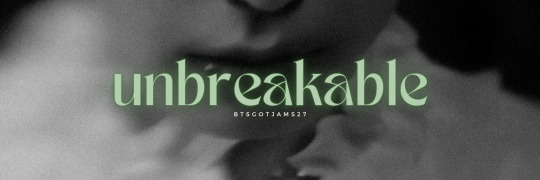
✨ title: unbreakable | one-shot | ✨ pairing: vampire!jk x slayer f!reader
✨ genre: vampire!au, 1800s era
✨ rating: pg-13 | ✨word count: 1.6k
✨ warnings: mentions of killing vampires, mentions of death, mentions of blood
✨ a/n: hi anon! thanks for requesting this. i hope you enjoy it. also, i apologize if the language goes back and forth between old and modern english (lol) i tried my best.

The eve of your eighteenth birthday was soon arriving. You'd been training with your brother since you were sixteen to become a vampire slayer. It's been instilled in you since you were young to hate vampires. Your mother's bedtime stories were not fairy tales of princesses who lived happily ever after but monsters who go bump in the night. You've always dreamt of living free from this fate, but you knew there was no way out.
“Brother–I am too weak,” you said out of breath. You and your brother have been training for the past two hours. “I am not built to kill.” Your brother came at you again, almost inflicting a wound on your arm.
“This is your destiny. You can’t escape it, even if you wanted to, sister.”
“My destiny?” You scoffed at your brother. “What if I choose to live a life free from all of this? Am I not allowed to choose my own path? Make my own decisions?”
Your brother considered you naive, innocent, or even a fool. “It’s our calling as slayers, and it is in our blood.”
Destiny. Calling. Fate. You've heard it all. You've heard it your whole life and were sick of it. The eve of your eighteenth birthday meant you’d hunt for vampires, making your first kill, setting the slayer’s mark upon your skin, and once you were marked as a slayer, your destiny was unbreakable; you’d hunt for life.
“If it is in my blood, then I’d rather die at the hands of a vampire than choose this life. I don't want to kill people.” You could hardly hurt a fly, but to drive a stake through someone’s heart–you didn’t dare to do so.
Your brother shook his head, laughing at your comment while twirling the dagger in his hand. “They’re not people, sister. They’re monsters. What if they come after our mother or father? Me? Our town? What will you do then? We must be a refuge to those around us.”
You couldn’t bear the thought of your loved ones being hurt, but vampires were once people too. It wasn’t your place to choose whether or not someone died.

The night was late, and you couldn’t sleep due to a constant, faint clanking below the house. Maybe it was a mouse caught in a trap or an old pipe ready to burst. Either way, you seek the disturbance keeping you awake.
You held the dimly lit oil lamp in one hand and your white nightgown in the other. You tiptoed down the creaky wooden stairs, walking towards the darkened cellar where the noise was coming from.
Holding the lamp up to investigate the faint sound, you could see a hand shackled in chains. As you stepped closer, noticing a man slumped forward, softly clanking the chain against the wall. So he was the one keeping you up at night.
When the man saw a flicker of light, he immediately lifted his head, peering in your direction, approaching you as close as the chain would allow him to. “Please miss. Do you have any food?” The man begged, “It has been four days since I have eaten.”
Seeing this man in this predicament was awful, but you do not dare cross your brother. “If my brother has locked you in here, it is for a reason.”
“My love–I can see it in you, and I know you have a good heart. Please, I just need a bit of your blood.”
You should’ve known he was a vampire. Who else would your brother keep in the cellar? You should not be one to muck around in your brother’s business. You were not a slayer–yet.
“I should not be here. My brother will have my head if he sees me. I must go,” you quickly apologized to the man before running off.
Upon returning to your room, the chains rattling from the cellar grew thunderous, and at a moment’s notice, you were fearful that it would awaken the rest of your family. You let ten minutes go by, then fifteen to see if the man would stop–but he did not.
Once again, you found yourself downstairs, unsure what to do or say to this vampire to cease his endless disturbance. You peered at the wall of wooden stakes. Although you didn’t want to kill him, it wouldn’t hurt to threaten him.
You paced your steps when approaching the hungry vampire; despite never having to face a vampire directly, you knew to take precautions, to always be on guard. Your family unrelentingly told stories upon stories of vampires and the horrific things they did, ravaging towns, leaving bodies drained of blood, consuming and destroying everything in their path. But again, it was not your place to choose another’s fate.
When you drew near, lamp in one hand, stake in the other, the clanking from the chain suddenly stopped. You could not see the man but only saw darkness. Lifting your lamp, you stepped forward to the cellar, peering in–when suddenly he appeared out of nowhere, grasping onto your wrist, causing you to gasp and drop the lamp. He pulled you towards the gates, your face against the cold, dark iron.
“Have you changed your mind, my love?” The man’s grip was firm, his hands freezing against your skin.
“May I remind you that you are in a house filled with slayers. If you are to kill me, my family will see to it that you will not live to see another day,” you said, squirming underneath his hold.
The man smirked at your confidence. "Even though you’re pointing that stake at me, you’ve yet to drive it into my heart, and I'm starting to doubt your hatred for me."
“I will do it–do not tempt me,” you warned him, knowing it was not true.
“You sure are fierce for someone who doesn’t want to be a slayer,” he declared with a chuckle. The man let go of your wrist. “I know you will do me no harm.”
Being kept in this cellar for four days, he could hear the endless conversations and training with you and your brother. You did not scare him; instead, he felt sympathy for you.
You didn’t want to admit it, but he was correct. You did not have the heart to hurt anyone. “What is your name?” You demanded of the man who seemed to know more about you than you.
“Jeon Jeongguk.”
“May I ask one more thing of you?”
Jeongguk nodded.
“Did you always want to be a vampire?” You knew you shouldn’t have asked that question. Your brother told you countless times not to appeal to their humanity because they were far gone, but you couldn’t help yourself; you were too curious.
Jeongguk shook his head. “I never wanted to be a vampire. The girl I loved was obsessed with the stories she’d heard and befriended a vampire who promised to turn her, but she said she didn’t want to live an eternal life if I wasn’t there.”
“So you turned into a vampire for love?” You thought it was a bit romantic but also a bit morbid. “Where is this girl now?”
Jeongguk shrugged. “She’s long gone; she ran off with the vampire that turned her. So much for love, huh?”
Your mouth twisted at his story, a part of you feeling sorrow for him. It’s not like he chose this life, it was thrust upon him, and it felt very similar to you. Setting your stake down, you began searching for something in the darkness.
Jeongguk knitted his brows together in confusion when you returned with the key, beginning to unlock the cellar, then releasing his wrist from the shackle. “What are you doing?”
“I’m letting you go,” you muttered.
“You’re not afraid of me?” He asked while massaging his wrist, glaring at you, unsure if this was a trick. He wondered if your family was waiting in the shadows, ready to take his life.
“You turned into a vampire for love,” you teased.
“I could kill you in an instant,” Jeongguk threatened.
“Then you would have done it already,” you countered. “Don’t make me regret this.”
And he was gone in an instant. No goodbye, no thank you, a very rude vampire, for saying the least.
Would your brother have your head for this? Maybe, but you were a good liar. You’d tell him the vampire was stronger than you and that you needed more training to avoid receiving the slayer’s mark. You figured you’d better head back into bed before it came to that the vampire had disappeared.
Just as you were going to lay your head down on the feathery pillow, another noise caught your attention. You muttered curses, wondering what it was now; this time, the noise came from the window–a light tapping.
When you arose for the third time tonight, walking to the window, you scoffed at the sight in front of you. “What are you doing? I thought you left,” you said after you opened the window.
“I forgot to say thank you,” Jeongguk expressed with a smirk.
“You’re welcome. Is that all?”
Jeongguk stood with his hands behind his back, legs crossed. It looked like he wanted to ask you something.
“Well…go on. You’ll burn in the sun if we stand here till morning. Spit it out.”
He cleared his throat, “Do you…do you want to come with me?”
The corners of your mouth curved into a smile. An almost vampire slayer and vampire running away together? Your family would have a field day.
“Yes.”
#jungkook fanfic#jungkook fic#bts fanfic#jeon jungkook#jungkook#jungkook vampire#vampire au#jungkook x you#jungkook x reader#jungkook oneshot#jungkook scenarios#jungkook imagine
131 notes
·
View notes
Text
i've come to truly hate all the "DAMN CORSETS I HATE THEM SO MUCH" that constantly shows up in historical dramas because like... women controlled their own fashions from the 1700s into the late 1800s. Prior to that, women's fashions were often dictated by men who ruled trade organizations, and from the early 1900s to TODAY, it remains controlled by men. For some reason we think we're so enlightened and sexism is over or whatever, but women were actually doing much better for themselves fashion wise in the 1850s than they're doing now.
I'm not a fashion historian but Abby Cox is, so you should watch her video on the matter. I'm not saying women had no say in the eventual death of the corset-- surely it was women who decided to adapt it and adapt it until it basically became a girdle/bra and then just a bra, but fashion currently is an industry controlled and dictated mostly by men and then contracted out to the poorest women on the planet so that they can slave in factories for 12-14 hours a day making your shirt for $15. Where as in the 1700s, a woman could make a decent income on making clothes for other women, and there was not necessarily any man that was involved in the process. The death of the corset wasn't put in motion simply because of feminism and women's rights. I think industrialization was more of a nail in the coffin, as ready-to-wear garments made in bulk in factories made the highly individual process of corset making irrelevant, since dresses had to be fitted to these individual corsets in order to look flattering. Also, new materials started to flood the market, like spandex and elastic and everything that now goes into bras to make them comfortable.
No man was ordering women to wear corsets in the 1800s, just like the reason you wear a bra today isn't because you feel like men will yell at you if you don't. It's for comfort, it's for fit, it's for "basic decency". And women in historical dramas wouldn't comment on "having" to wear a corset; the idea of not wearing one would seem bizarre. And the more $60 bras I have to buy, the more wearing a corset starts to make a lot of sense. It's ONE garment you have that gets more comfortable the more you break it in/wear it, it's built from strong fabrics and lasts years, and it means less strain is put on the clothes you wear over it. Also, I feel like it'd be a blessing for me since my back loves to give me issues from time to time.
Women who worked in the fashion industry, collectively, were better off (financially) in the 1700s than they are now, where they currently fill factories across many countries in Asia and work long hours for terrible pay or are literal slaves so that some fashion conglomerate with a CEO making $45M a year can sell you $30 distressed jeans. The stories of what's going on are inescapable. So yeah, I do get angry when shows act like the corset is some kind of woman-oppressing machine.
MODERN FASHION is a woman-oppressing machine, on a scale your great-great-great-great-great grandmother could never comprehend.
9 notes
·
View notes